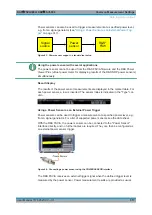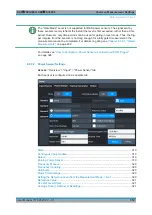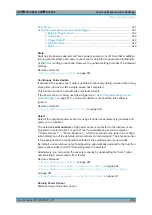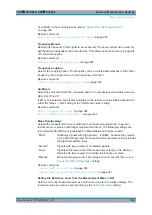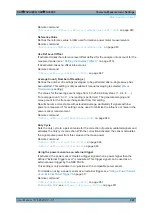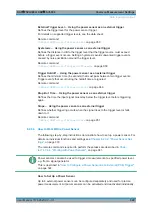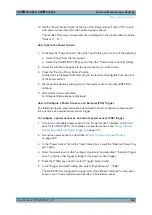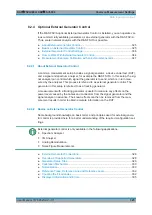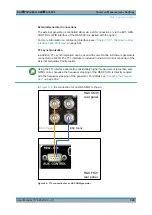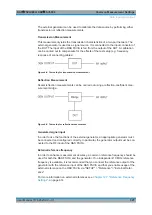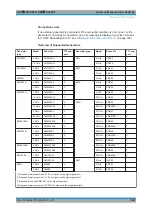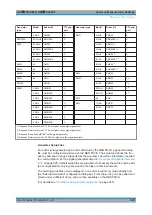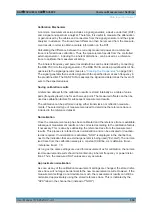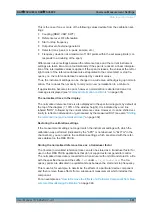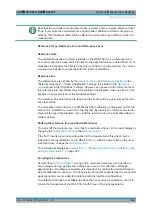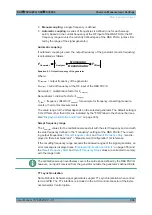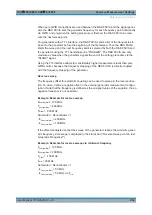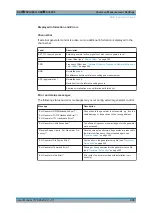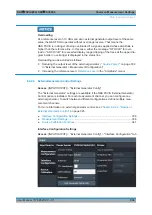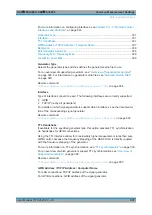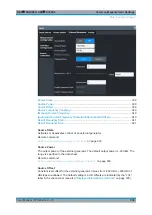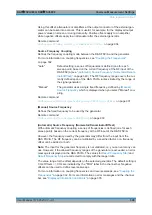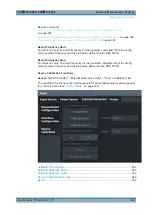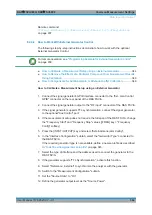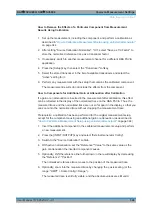
Common Measurement Settings
R&S
®
FSVA3000/ R&S
®
FSV3000
331
User Manual 1178.8520.02 ─ 01
This is the case if one or more of the following values deviate from the calibration set-
tings:
●
Coupling (RBW, VBW, SWT)
●
Reference level, RF attenuation
●
Start or stop frequency
●
Output level of external generator
●
Detector (max. peak, min. peak, sample, etc.)
●
Frequency deviation at a maximum of 1001 points within the set sweep limits (cor-
responds to a doubling of the span)
Differences in level settings between the reference trace and the current instrument
settings are taken into account automatically. If the span is reduced, a linear interpola-
tion of the intermediate values is applied. If the span increases, the values at the left or
right border of the reference dataset are extrapolated to the current start or stop fre-
quency, i.e. the reference dataset is extended by constant values.
Thus, the instrument settings can be changed in a wide area without giving up normali-
zation. This reduces the necessity to carry out a new normalization to a minimum.
If approximation becomes too poor, however, normalization is aborted and an error
message is displayed (see
"Displayed Information and Errors"
The normalized trace in the display
The normalized reference trace is also displayed in the spectrum diagram, by default at
the top of the diagram (= 100% of the window height). It is indicated by a red line
labeled "NOR", followed by the current reference value. However, it can be shifted ver-
tically to reflect an attenuation or gain caused by the measured DUT (see also
the reference line (and normalized trace)"
Restoring the calibration settings
If the measurement settings no longer match the instrument settings with which the
calibration was performed (indicated by the "APX" or no label next to "Ext.TG" in the
channel bar), you can restore the calibration settings, which are stored with the refer-
ence dataset on the R&S
FSV/A.
Storing the normalized reference trace as a transducer factor
The (inverse) normalized reference trace can also be stored as a
transducer factor
for
use in other R&S
FSV/A applications that do not support external generator control.
The normalized trace data is converted to a transducer with unit dB and stored in a file
with the specified name and the suffix
.trd
under
c:\r_s\instr\trd
. The fre-
quency points are allocated in equidistant steps between the start and stop frequency.
This is useful, for example, to determine the effects of a particular device component
and then remove these effects from a subsequent measurement which includes this
component.
For an example see
"How to Remove the Effects of a Particular Component from Mea-
surement Results Using Calibration"
Data Input and Output

